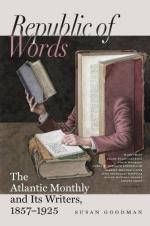Mr. St. George passed a week in finding firm footing upon all the circumference of his property; by that time, clear and far-sighted as an eagle, he had seized on every speck of error throughout its wide mismanagement, and had initiated Eloise into a new way of performing old duties, as coolly as if no indignant word or thought had ever passed between them. And meanwhile, in place of their ancient warfare, but with no later friendship, Eloise and Mrs. Arles had tacitly instituted an offensive and defensive alliance against the common enemy. This the common enemy soon perceived, laughed at it a little grimly at first, then accepted it, as a kind of martyrdom expiatory of all previous sins, that a man must have against his grain two hostile women in the house, neither of whom had anything but the shadow of a claim upon him. Still, Earl St. George had his own plans; and by degrees it dimly dawned on his flattered intelligence that one of these women used her hostility merely as a feint towards the other.
* * * * *
TYPES.
Mr. Samuel Weller, of facetious memory, has told us of the girl who, having learned the alphabet, concluded that it was not worth going through so much to get so little. This, to say the least of it, was disrespectful to Cadmus, and should be condemned accordingly. Authors have feelings, which even scholastic young maidens cannot be permitted to lacerate. I therefore warn the reader of this article against any inclination toward sympathy with the critical mood of that obnoxious female. My theme is not as lively as “Punch” used to be; but, on the other hand, it is not as dull as a religious novel. Patient investigation may find it really agreeable: good-nature will not find it a bore.
I propose, then, a half-hour’s gossip concerning Types, Type-Setting, and the machinery connected with Printing, at the present time. It would, perhaps, be interesting to review in detail the printing-devices of the past; but that would be to extend unwarrantably the limits of this article. Enough that any sketch of the invention, manufacture, and use of types would illustrate the triumph of the labor-saving instinct in man, and thus confirm the scientific lesson of to-day,—that machinery must entirely supersede the necessarily slow processes of labor by hand. That it will at no distant day supersede those processes in the art of printing is, as you will presently see, a fixed fact.
Machinery now does nearly every sort of labor,—economizing health, strength, time, and money, in all that it does. We tread upon beautifully figured carpets that are woven by machinery from single threads. We wear clothes that are made by machinery at the rate of two thousand stitches a minute. We hear in every direction the whistle of the locomotive, which saves us almost incalculable time, in the safe and convenient transportation of our persons and our property. We read in our newspapers messages that are brought




